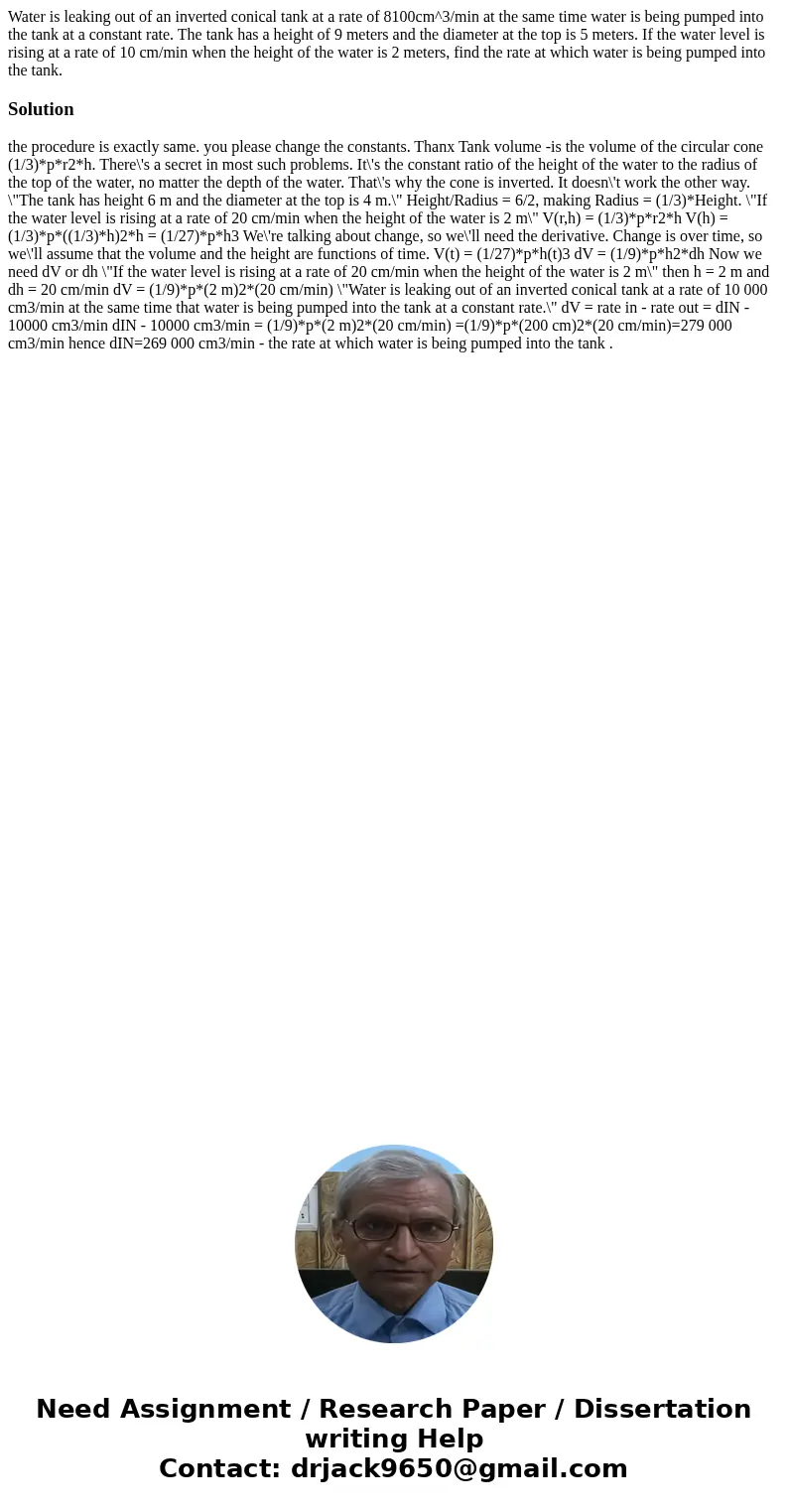Water is leaking out of an inverted conical tank at a rate o
Water is leaking out of an inverted conical tank at a rate of 8100cm^3/min at the same time water is being pumped into the tank at a constant rate. The tank has a height of 9 meters and the diameter at the top is 5 meters. If the water level is rising at a rate of 10 cm/min when the height of the water is 2 meters, find the rate at which water is being pumped into the tank.
Solution
the procedure is exactly same. you please change the constants. Thanx Tank volume -is the volume of the circular cone (1/3)*p*r2*h. There\'s a secret in most such problems. It\'s the constant ratio of the height of the water to the radius of the top of the water, no matter the depth of the water. That\'s why the cone is inverted. It doesn\'t work the other way. \"The tank has height 6 m and the diameter at the top is 4 m.\" Height/Radius = 6/2, making Radius = (1/3)*Height. \"If the water level is rising at a rate of 20 cm/min when the height of the water is 2 m\" V(r,h) = (1/3)*p*r2*h V(h) = (1/3)*p*((1/3)*h)2*h = (1/27)*p*h3 We\'re talking about change, so we\'ll need the derivative. Change is over time, so we\'ll assume that the volume and the height are functions of time. V(t) = (1/27)*p*h(t)3 dV = (1/9)*p*h2*dh Now we need dV or dh \"If the water level is rising at a rate of 20 cm/min when the height of the water is 2 m\" then h = 2 m and dh = 20 cm/min dV = (1/9)*p*(2 m)2*(20 cm/min) \"Water is leaking out of an inverted conical tank at a rate of 10 000 cm3/min at the same time that water is being pumped into the tank at a constant rate.\" dV = rate in - rate out = dIN - 10000 cm3/min dIN - 10000 cm3/min = (1/9)*p*(2 m)2*(20 cm/min) =(1/9)*p*(200 cm)2*(20 cm/min)=279 000 cm3/min hence dIN=269 000 cm3/min - the rate at which water is being pumped into the tank .
 Homework Sourse
Homework Sourse